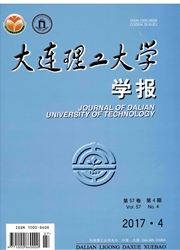

 中文摘要:
中文摘要:
建立了考虑弹塑性剪切变形的钢筋混凝土薄壁空心墩抗震滞回分析模型,模型中以修正的压力场理论(modified compression field theory,MCFT)计算空心墩的剪切变形,并通过Ozeebe建议的滞回规则描述剪切滞回关系,以纤维单元模型模拟空心墩的弯曲变形,两者通过串联模型共同模拟试件在地震条件下的弯剪作用.利用建立的数值模型对1个矩形和3个圆形薄壁空心墩试件的滞回曲线进行了模拟分析.结果表明,不考虑剪切变形的纤维单元模型模拟的滞回曲线与试验结果有较大的误差,难以准确模拟滞回曲线的捏拢效应和耗能能力,并可能高估薄壁墩的刚度和残余位移,而建议的模型很好地模拟了薄壁墩的滞回性能.
 英文摘要:
英文摘要:
A new numerical model considering elasto-plastic shear deformation for RC thin-walled hollow bridge piers was proposed. In this model, the shear force-shear displacement relationship of the pier was obtained by the modified compression field theory (MCFT) and implemented in the hysteretic shear model proposed by Ozcebe, while the flexural deformation was simulated by fiber element model. And then, the MCFT and fiber element model were incorporated into a series model to account for the flexure-shear interaction of the piers under seismic effect. The hysteretic curves for one rectangular and three circular thin-walled hollow pier specimens were simulated and compared with experimental results. It is found that the fiber element model without considering shear deformation gives inadequate results and is incapable of predicting the pinching effect and energy dissipation capacity of the piers. Moreover, the fiber element model would overestimate the lateral stiffness and residual displacement of the pier specimens. Comparisons between test and simulation results reveal the adequacy of the proposed numerical model.
 同期刊论文项目
同期刊论文项目
 同项目期刊论文
同项目期刊论文
 期刊信息
期刊信息
